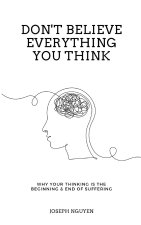
Kód: 18902673
Leading the Story via Misleading. Levels of Deception in "The Hound of the Baskervilles" by Sir Arthur Conan Doyle
Autor Michael Barkas
Seminar paper from the year 2017 in the subject English - Literature, Works, grade: 1,3, University of Bonn (Anglistik, Amerikanistik und Keltologie), language: English, abstract: The introductory chapter provides a brief retrospe ... celý popis
- Jazyk:
 Angličtina
Angličtina - Vazba: Brožovaná
- Počet stran: 52
Nakladatelství: Grin Publishing, 2018
- Více informací o knize

Mohlo by se vám také líbit
-

Alpha Paintings 3
1118 Kč -

The Little Christmas Star
275 Kč -

Earthly Kings: Temporal Treasures
276 Kč -

Flower Baskets Out of Paper for All Occasions Book 22: Added to Something Blue
276 Kč -

The Novella Formerly Known As, Yes Sir
301 Kč -

CYCLOPEDIA OF ENGINEERING: A MANUAL OF S
1072 Kč -

Richard Wagner
306 Kč
Dárkový poukaz: Radost zaručena
- Darujte poukaz v libovolné hodnotě a my se postaráme o zbytek.
- Poukaz se vztahuje na celou naši nabídku.
- Elektronický poukaz vytisknete z e-mailu a můžete ihned darovat.
- Platnost poukazu je 12 měsíců od data vystavení.
Více informací o knize Leading the Story via Misleading. Levels of Deception in "The Hound of the Baskervilles" by Sir Arthur Conan Doyle
Nákupem získáte 118 bodů
 Anotace knihy
Anotace knihy
Seminar paper from the year 2017 in the subject English - Literature, Works, grade: 1,3, University of Bonn (Anglistik, Amerikanistik und Keltologie), language: English, abstract: The introductory chapter provides a brief retrospection of the "Sherlock Holmes phenomenon" in Doyle's times and in our days. It also offers some important background information on the rise of detective-mystery stories and the socio-political circumstances that necessitated the emergence of a figure like Holmes in the literary scene. Chapter 2 elaborates on three different levels of deception. On one occasion, deception can be said to be synonymous to superstition because it results from lack of observation or sufficient scientific knowledge in order to explain the inexplicable. This type of deception is classified as such due to the constantly advancing scientific achievements, the questioning and decline of Christian faith during the Victorian era, the triumph of rationality over superstition and the more systematic examination of various peculiar phenomena. To a certain degree, Doyle represents all these because he is a man of science and knows how to "enlighten" or teach the public of his times by using scientific insights and some far-fetched observations and deductions which are performed by his hero. On another occasion, deception is bound to Watson's narrating style. Finally, the third and most explicit type is part of the story's plot. Holmes, on the one hand, lies to Watson and deceives him in order to confront the upcoming danger in utmost secrecy. There is no evil intention here. On the other hand, Jack Stapleton, who represents an impious fraud and wants to gain for his own sake deceives in order to fulfil his crime. His evil intentions render him the main source of deception by means of disguising himself, his wife and his hound so that they look much different than what they are in reality. Finally, chapter 3 provides some thoughts and conclusions about reading pleasure and reader expectations, but also some critical "rules" that pertain to the reader's involvement in the story. Those "rules" of the later Golden Age of detective fiction were proposed by famous authors, mainly Father Ronald Knox, Raymond Chandler and S. S. Vine, who talked about 'honesty' to the reader, various aesthetic values and the chance to enable a parallel solving of the mystery along with the detective. Nevertheless, a recent approach to this puzzle-solving aspect shows how impossible it is to solve Conan Doyle's mysteries by following certain clues and to arrive at fixed solutions. Examples will be offered.
 Parametry knihy
Parametry knihy
1178 Kč
- Plný název: Leading the Story via Misleading. Levels of Deception in "The Hound of the Baskervilles" by Sir Arthur Conan Doyle
- Autor: Michael Barkas
- Jazyk:
 Angličtina
Angličtina - Vazba: Brožovaná
- Počet stran: 52
- EAN: 9783668603004
- ISBN: 3668603006
- ID: 18902673
- Nakladatelství: Grin Publishing
- Hmotnost: 88 g
- Rozměry: 210 × 148 × 3 mm
- Rok vydání: 2018
Oblíbené z jiného soudku
-

Berserk Deluxe Volume 1
1207 Kč -

Haunting Adeline
617 Kč -

Berserk Deluxe Volume 2
1033 Kč -

Cry Baby Coloring Book
238 Kč -

Berserk Deluxe Volume 3
1138 Kč -

Hunting Adeline
633 Kč -

The Official Stardew Valley Cookbook
586 Kč -

Powerless
259 Kč -

Atomic Habits
464 Kč -

Harry Potter and the Prisoner of Azkaban (Minalima Edition)
876 Kč -

Berserk Deluxe Volume 4
1165 Kč -

Chainsaw Man, Vol. 15
251 Kč -

White Nights
71 Kč -

Gravity Falls Journal 3
357 Kč -

House of Leaves
504 Kč -

JUJUTSU KAISEN V22
239 Kč -

Dungeons & Dragons Essentials Kit (D&d Boxed Set)
752 Kč -

Iron Flame
435 Kč -

No Longer Human
287 Kč -

A Little Life
259 Kč -

Surrounded by Idiots
256 Kč -

Berserk Deluxe Volume 5
1115 Kč -

Twisted Love
215 Kč -

Fourth Wing
214 Kč -

Don't Believe Everything You Think
328 Kč -

Bungo Stray Dogs, Vol. 8 (light novel)
347 Kč -

BALLAD OF SWORD & WINE QIANG JIN JIU V01
374 Kč -

Twisted Lies
215 Kč -

The 48 Laws of Power
523 Kč -

Twisted Games
259 Kč -

Court of Thorns and Roses Paperback Box Set (5 books)
1265 Kč -

Court of Thorns and Roses
239 Kč -

Berserk Deluxe Volume 6
1086 Kč -

Reckless
282 Kč -

New Happy
430 Kč -

Heaven Official's Blessing: Tian Guan Ci Fu (Novel) Vol. 1
357 Kč -

The Creative Act
552 Kč -

Icebreaker
239 Kč -

Dune Messiah
178 Kč -

Court of Mist and Fury
221 Kč -

Harry Potter and the Chamber of Secrets: MinaLima Edition
720 Kč -

Vagabond (VIZBIG Edition), Vol. 2
508 Kč -

Heaven Official's Blessing: Tian Guan Ci Fu Vol. 4
386 Kč -

Twisted Hate
214 Kč -

The Laws of Human Nature
337 Kč -

Heaven Official's Blessing: Tian Guan Ci Fu (Novel) Vol. 2
415 Kč -

CHAINSAW MAN V14
217 Kč -

King of Sloth
238 Kč -

Berserk Deluxe Volume 7
1110 Kč
Osobní odběr Praha, Brno a 12903 dalších
Copyright ©2008-24 nejlevnejsi-knihy.cz Všechna práva vyhrazenaSoukromíCookies



 Vrácení do měsíce
Vrácení do měsíce 571 999 099 (8-15.30h)
571 999 099 (8-15.30h)